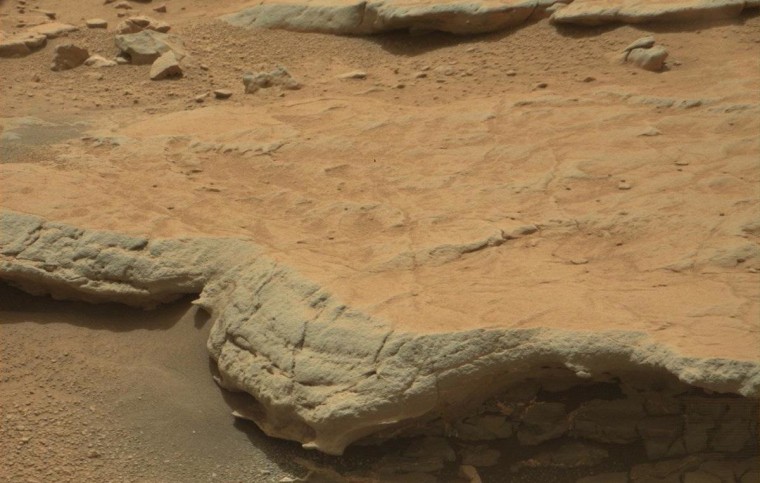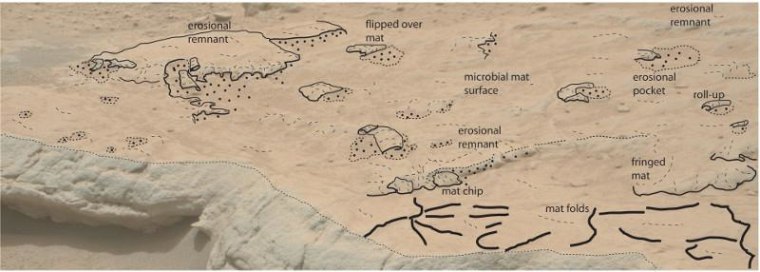A careful study of images taken by the NASA rover Curiosity has revealed intriguing similarities between ancient sedimentary rocks on Mars and structures shaped by microbes on Earth. The findings suggest, but do not prove, that life may have existed earlier on the Red Planet.
The photos were taken as the Mars rover Curiosity drove through the Gillespie Lake outcrop in Yellowknife Bay, a dry lakebed that underwent seasonal flooding billions of years ago. Mars and Earth shared a similar early history. The Red Planet was a much warmer and wetter world back then.
On Earth, carpet-like colonies of microbes trap and rearrange sediments in shallow bodies of water such as lakes and coastal areas, forming distinctive features that fossilize over time. These structures, known as microbially-induced sedimentary structures (or MISS), are found in shallow water settings all over the world and in ancient rocks spanning Earth's history. [The Search for Life on Mars: A Photo Timeline]

Nora Noffke, a geobiologist at Old Dominion University in Virginia, has spent the past 20 years studying these microbial structures. Last year, she reported the discovery of MISS that are 3.48 billion years old in the Western Australia's Dresser Formation, making them potentially the oldest signs of life on Earth.
In a paper published online last month in the journal Astrobiology (the print version comes out this week), Noffke details the striking morphological similarities between Martian sedimentary structures in the Gillespie Lake outcrop (which is at most 3.7 billion years old) and microbial structures on Earth.
The distinctive shapes include erosional remnants, pockets, domes, roll-ups, pits, chips and cracks, which on Earth can extend from a few centimeters to many kilometers.
Although Noffke makes a tantalizing case for possible signs of ancient life on Mars, her report is not a definitive proof that these structures were shaped by biology. Getting such confirmation would involve returning rock samples to Earth and conducting additional microscopic analyses, a mission that isn’t scheduled anytime in the near future.
"All I can say is, here's my hypothesis and here's all the evidence that I have," Noffke says, "although I do think that this evidence is a lot."

"The fact that she pointed out these structures is a great contribution to the field," says Penelope Boston, a geomicrobiologist at the New Mexico Institute of Mining and Technology. "Along with the recent reports of methane and organics on Mars, her findings add an intriguing piece to the puzzle of a possible history for life on our neighboring planet."
The images on which Noffke drew are publicly available on the Mars Science Laboratory page on NASA’s website.
— Johnny Bontemps, Astrobiology Magazine via Space.com
This is a condensed version of a report from Space.com. Read the full report. Follow Johnny Bontemps on Twitter. The original story was provided by Astrobiology Magazine, a Web-based publication sponsored by the NASA astrobiology program. Follow Space.com @Spacedotcom, Facebook and Google+.